链表

逻辑结构


无头单向非循环链表:结构简单,一般不会单独用来存数据。实际中更多是作为其他数据结构的子结构,如哈希桶、图的邻接表等等。
无头双向链表:在Java的集合框架库中LinkedList底层实现就是无头双向循环链表。
链表的实现
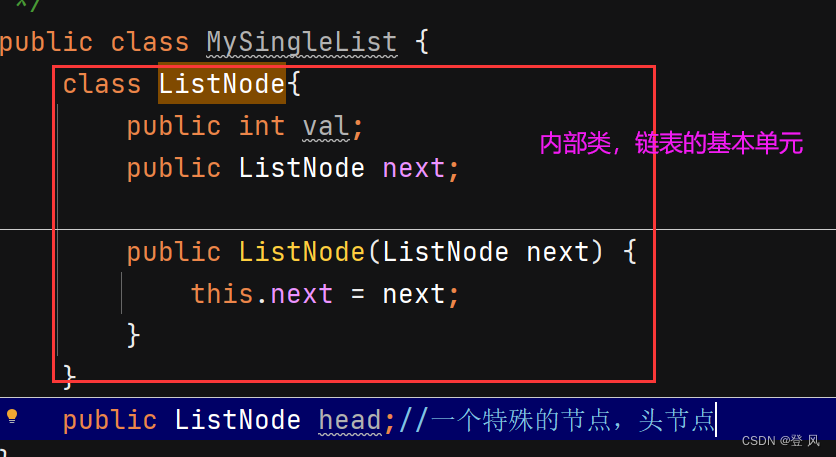
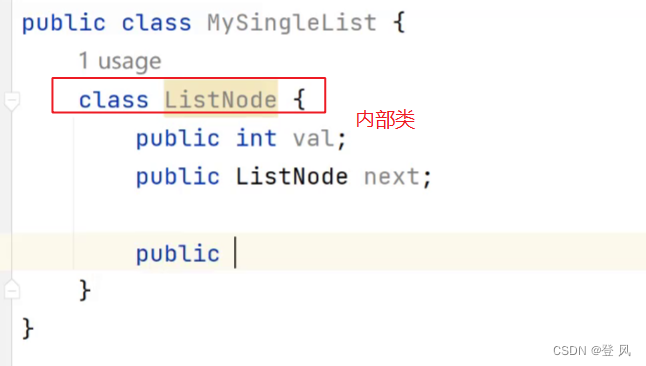
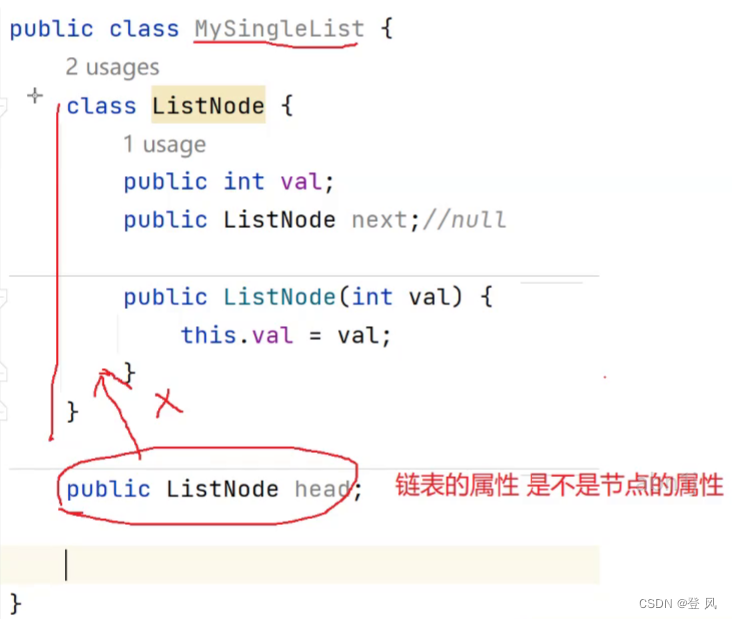
创建一个链表
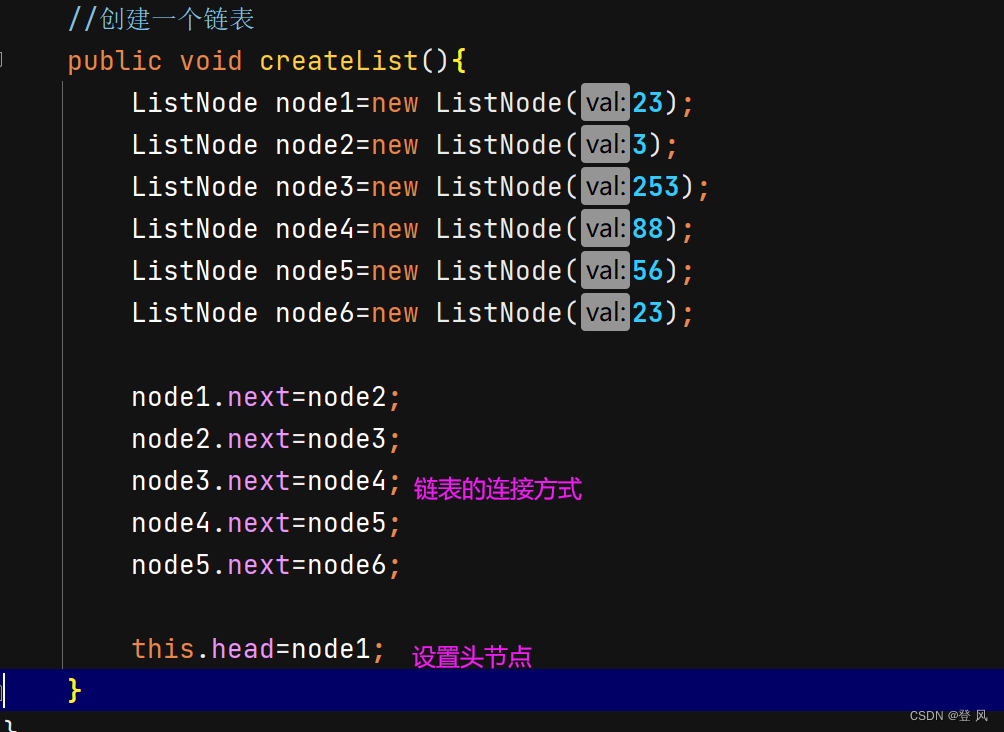


遍历单链表
、
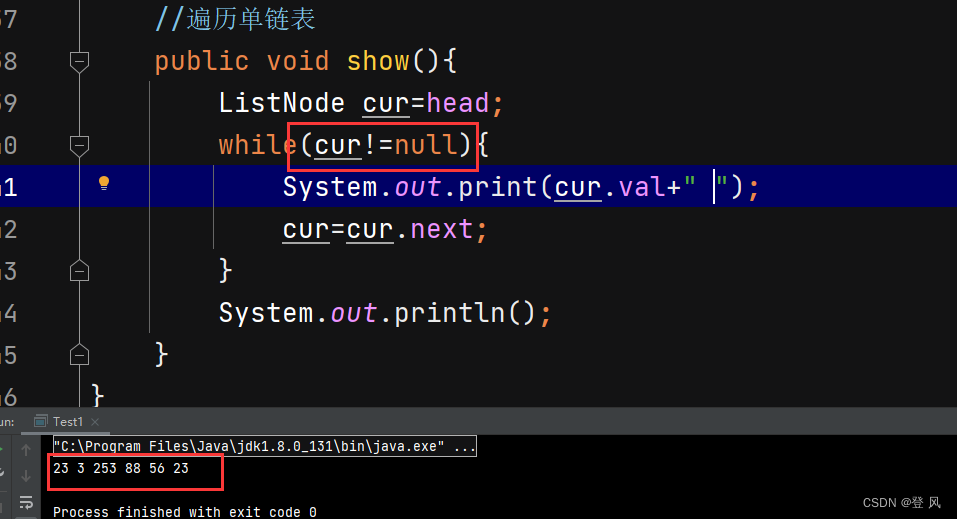
得到单链表的长度 链表中节点的个数



查找是否包含关键字key是否在单链表当中
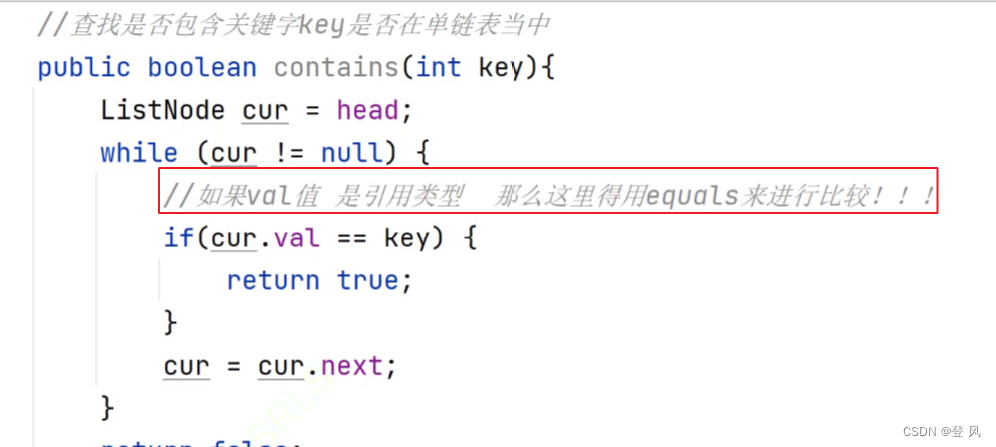
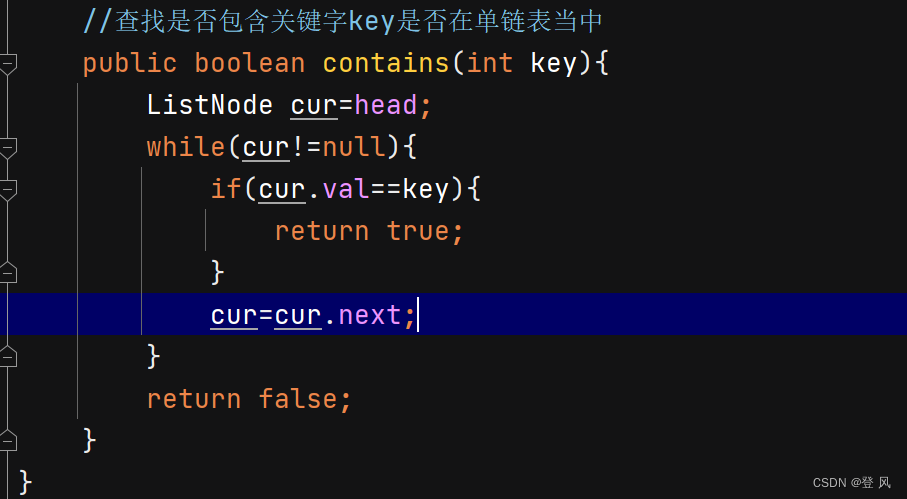

头插和尾插

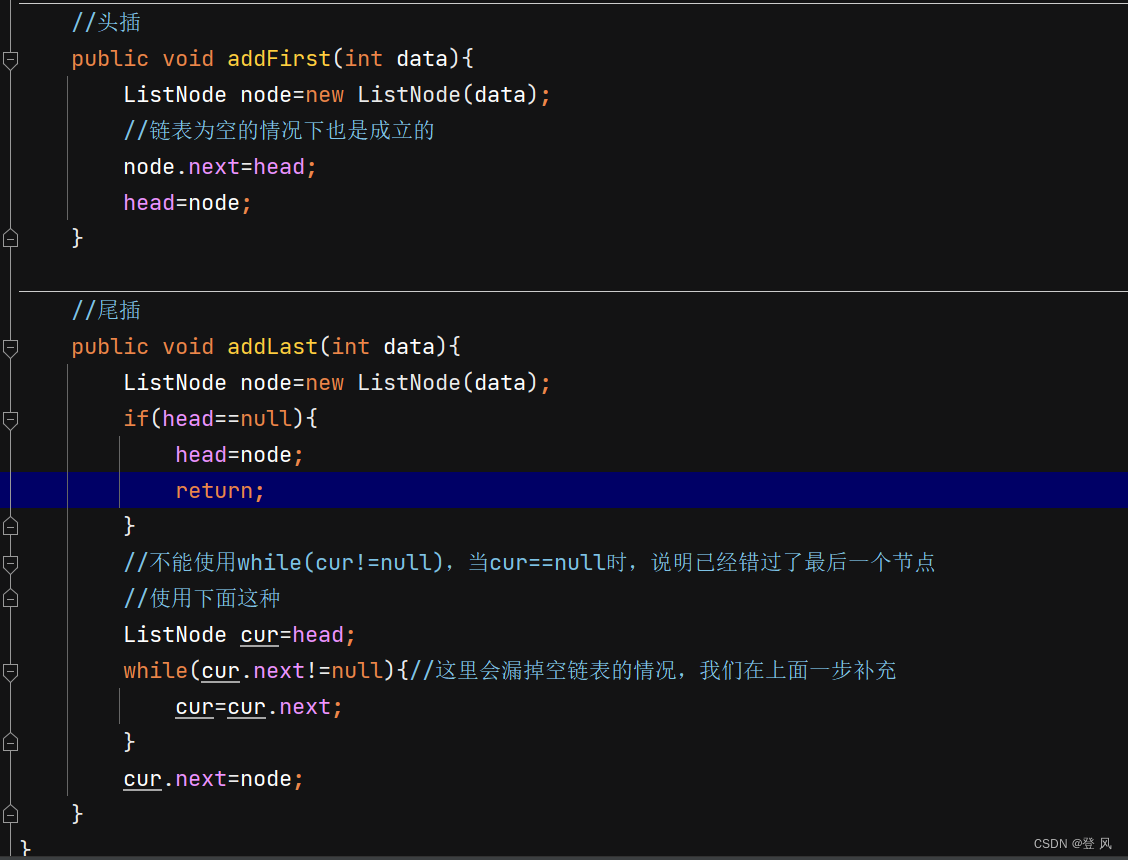
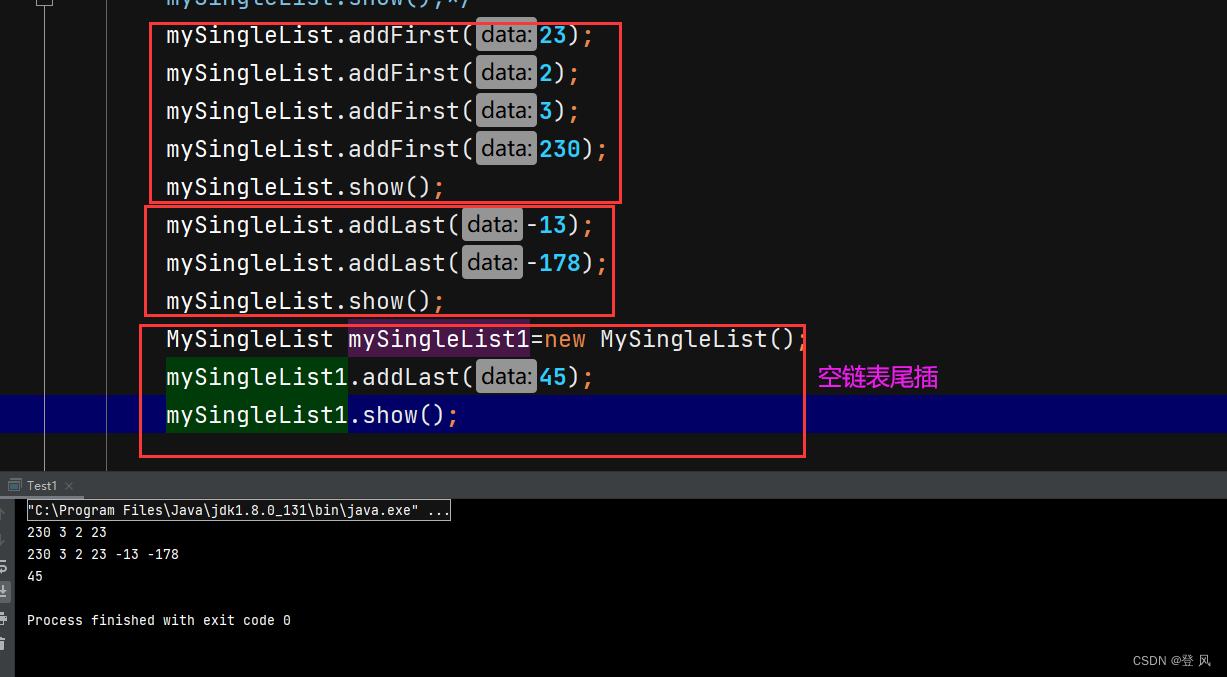
任意位置的插入
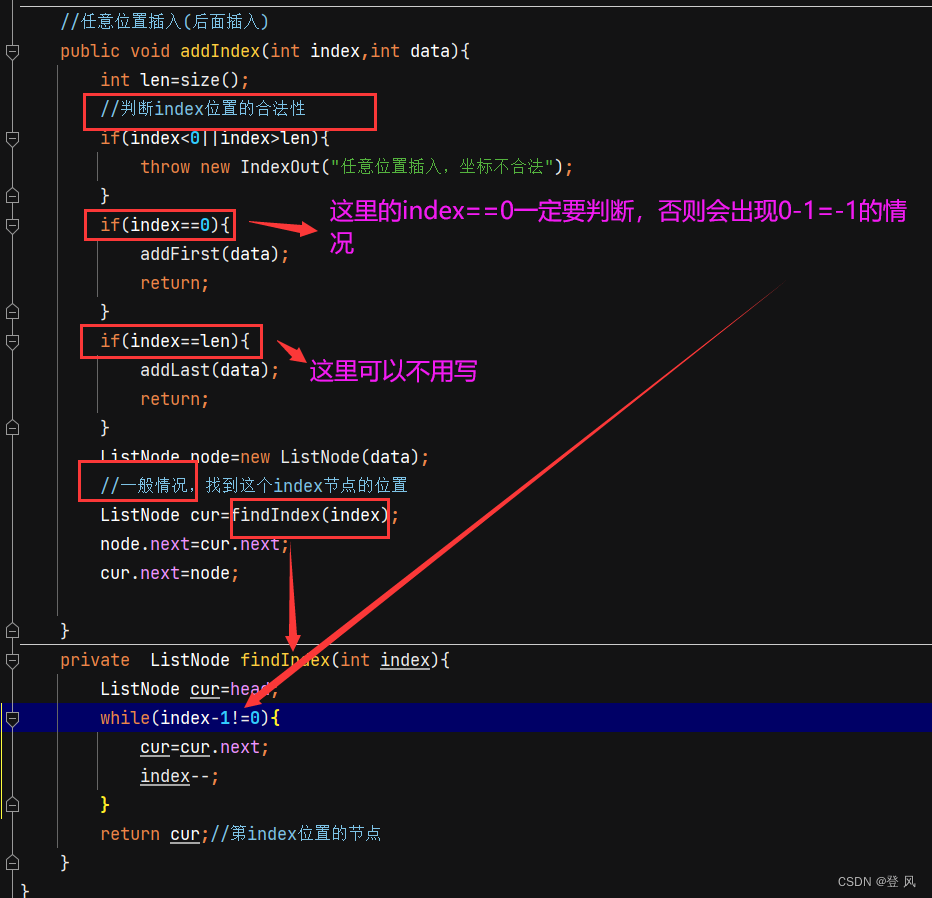
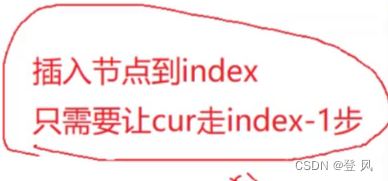
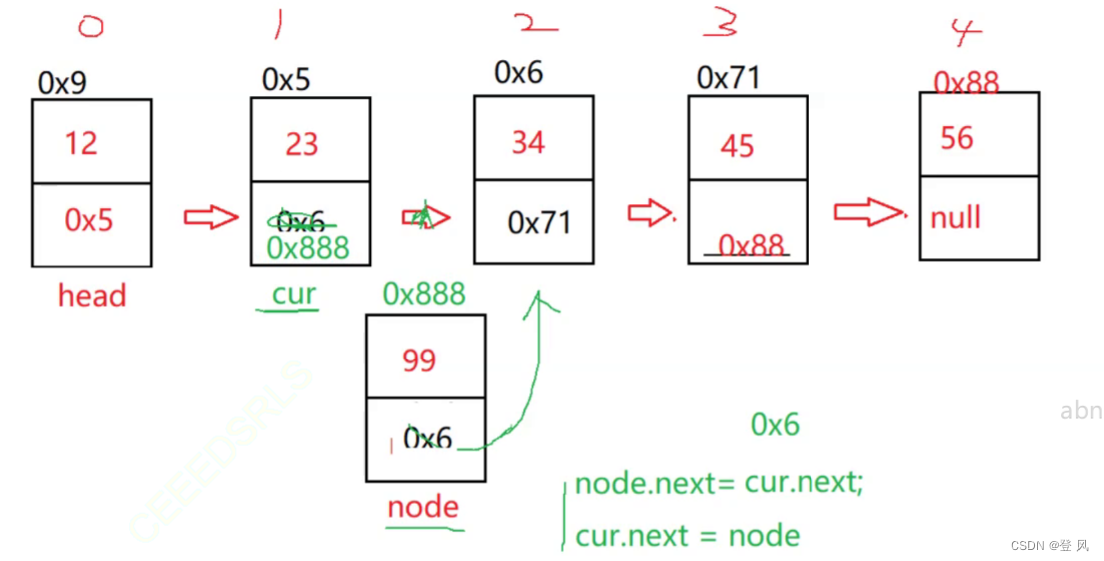
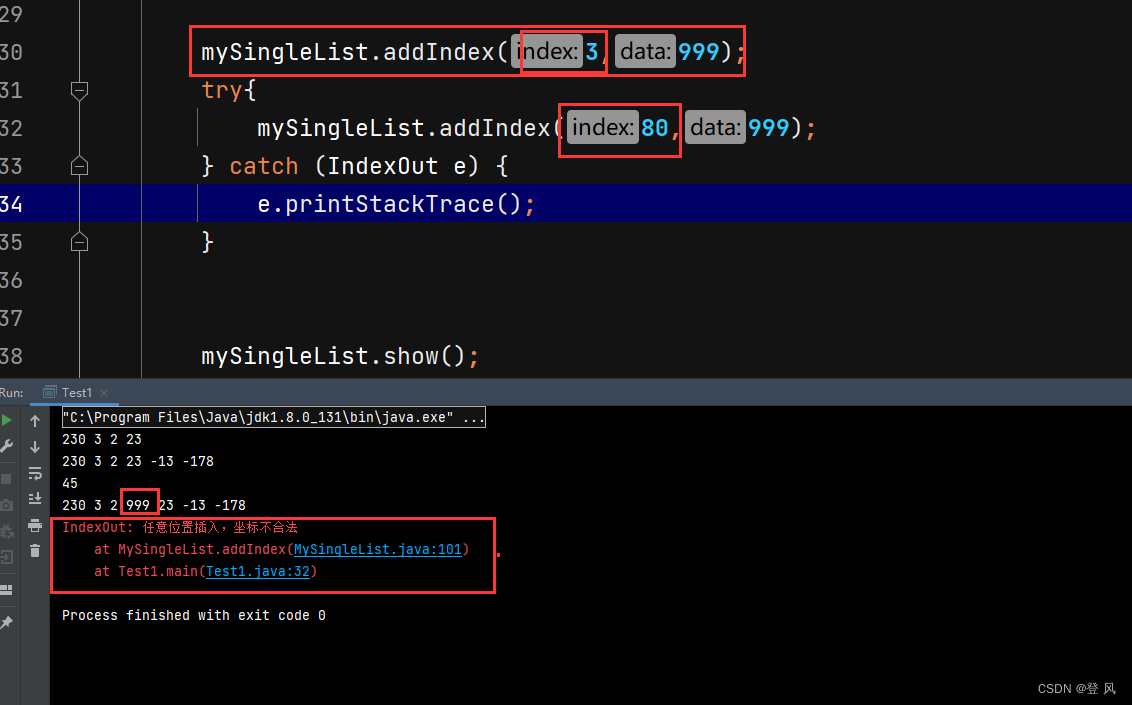
删除第一次出现关键字为key的节点
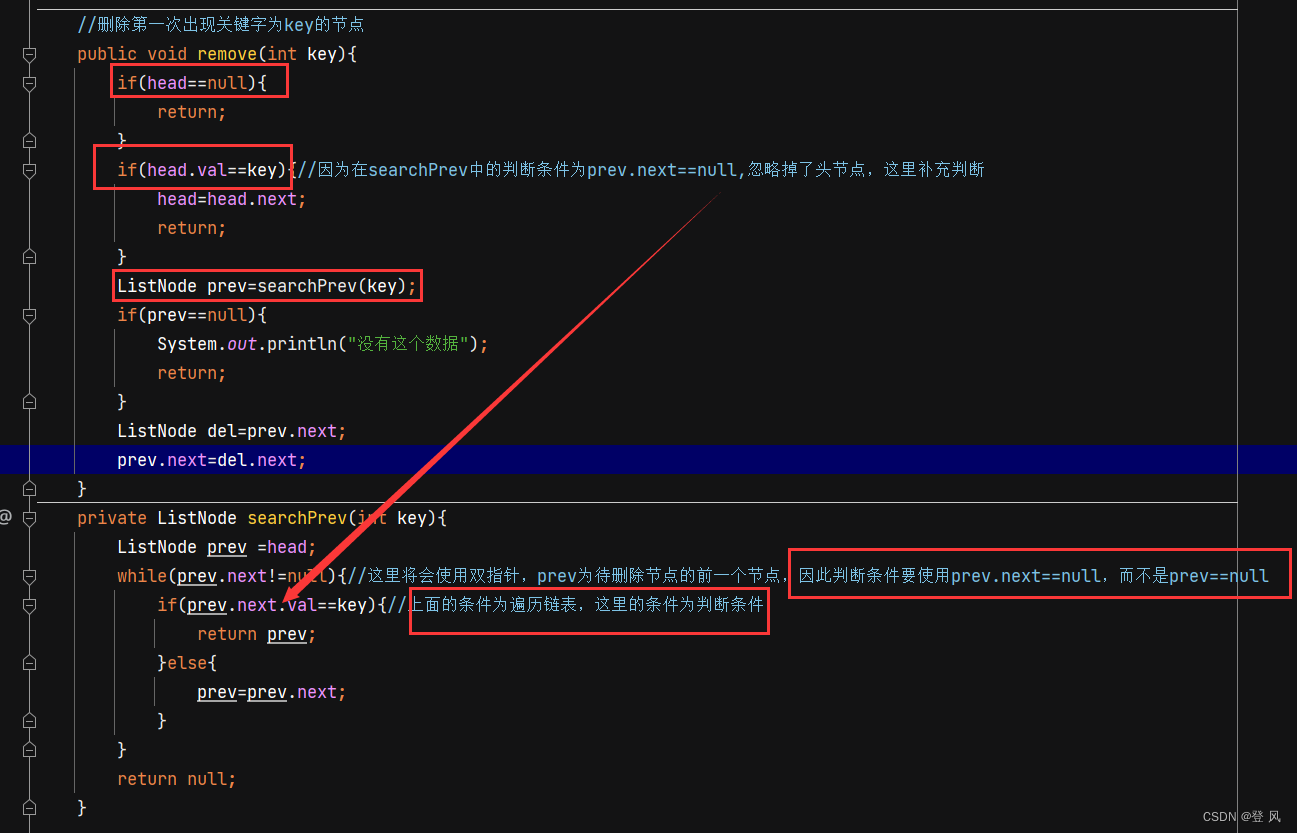
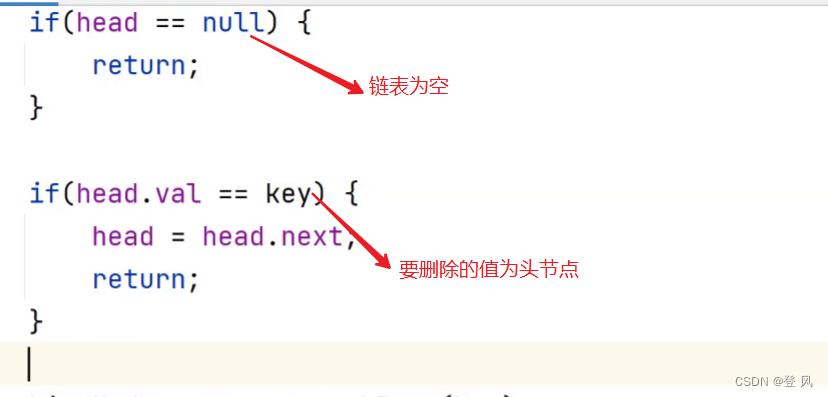
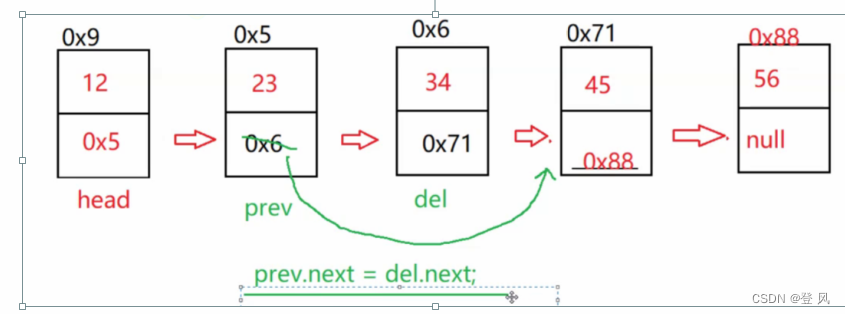


删除所有值为key的节点
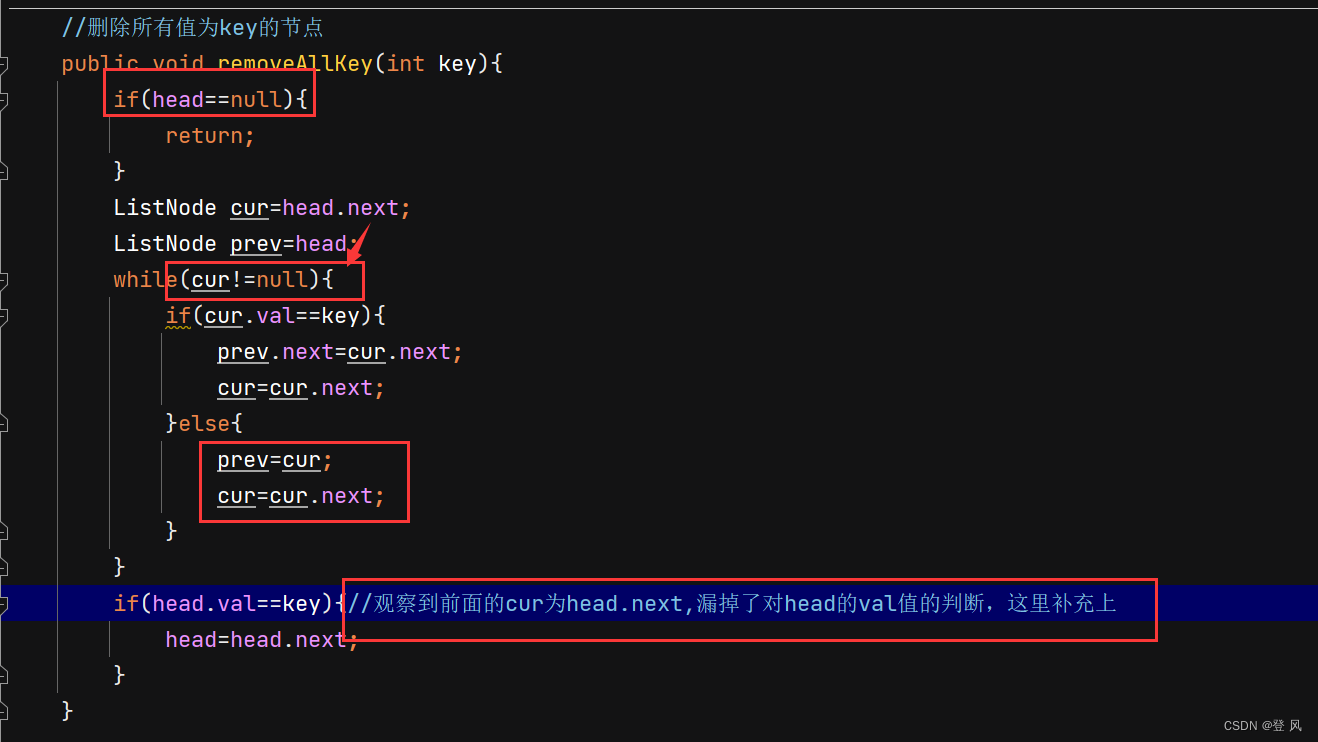
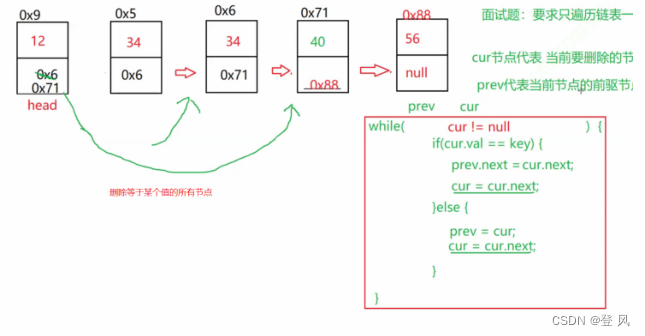
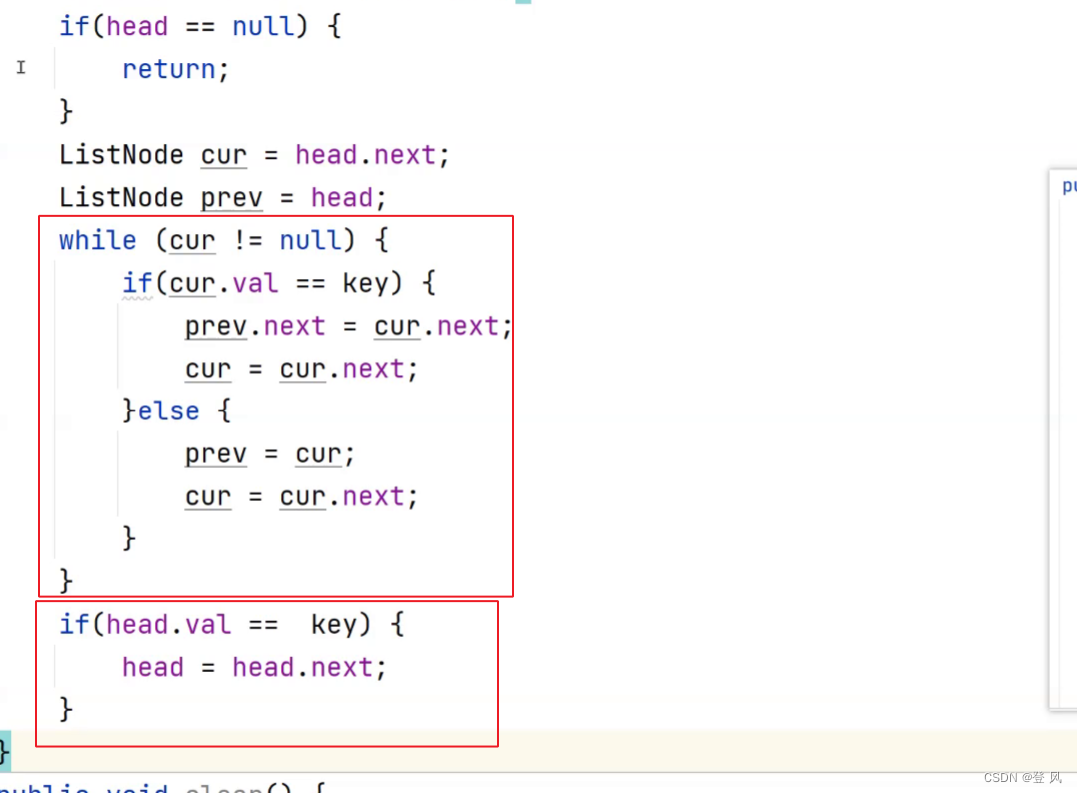
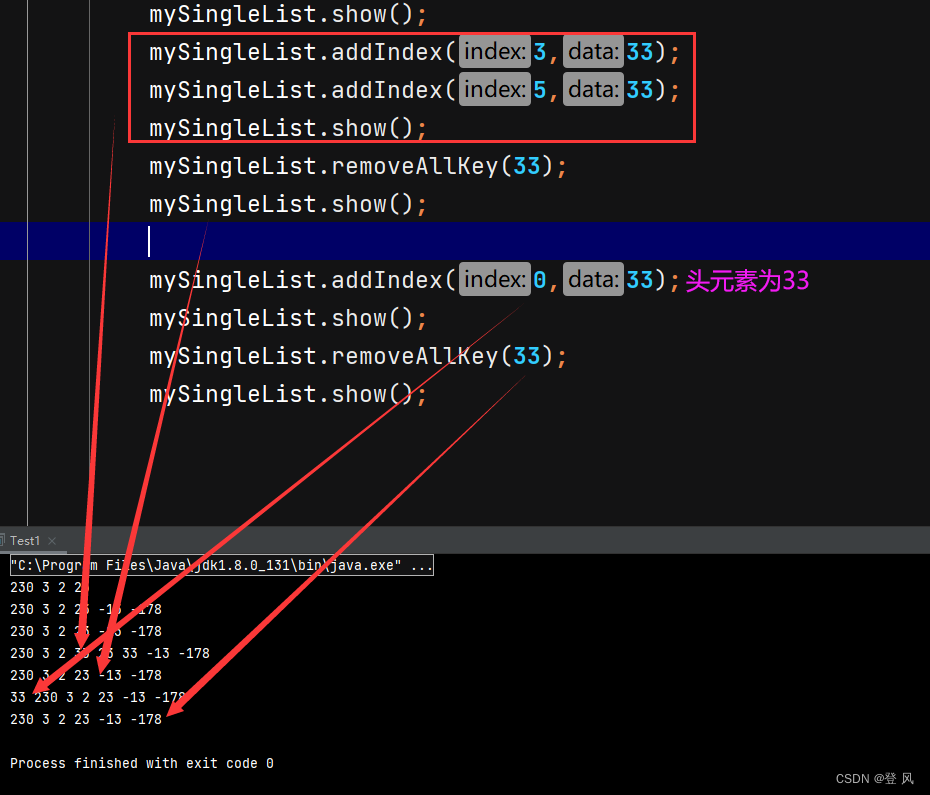
clear
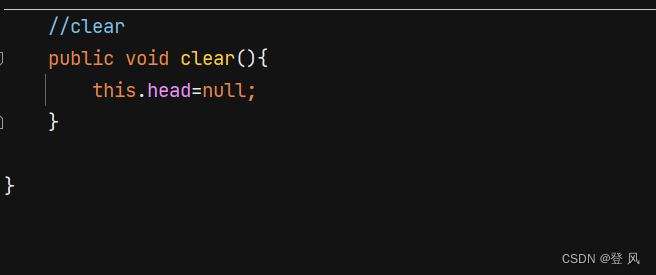


上述单链表的所有代码
MySingleList
public class MySingleList { class ListNode{ public int val; public ListNode next; public ListNode(int val) { this.val = val; } } public ListNode head;//一个特殊的节点,头节点 //创建一个链表 public void createList(){ ListNode node1=new ListNode(23); ListNode node2=new ListNode(3); ListNode node3=new ListNode(253); ListNode node4=new ListNode(88); ListNode node5=new ListNode(56); ListNode node6=new ListNode(23); node1.next=node2; node2.next=node3; node3.next=node4; node4.next=node5; node5.next=node6; this.head=node1; } //遍历单链表 public void show(){ ListNode cur=head; while(cur!=null){ System.out.print(cur.val+" "); cur=cur.next; } System.out.println(); } //链表的长度 public int size(){ int count=0; ListNode cur=head; while(cur!=null){ count++; cur=cur.next; } return count; } //查找是否包含关键字key是否在单链表当中 public boolean contains(int key){ ListNode cur=head; while(cur!=null){ if(cur.val==key){ return true; } cur=cur.next; } return false; } //头插 public void addFirst(int data){ ListNode node=new ListNode(data); //链表为空的情况下也是成立的 node.next=head; head=node; } //尾插 public void addLast(int data){ ListNode node=new ListNode(data); if(head==null){ head=node; return; } //不能使用while(cur!=null),当cur==null时,说明已经错过了最后一个节点 //使用下面这种 ListNode cur=head; while(cur.next!=null){//这里会漏掉空链表的情况,我们在上面一步补充 cur=cur.next; } cur.next=node; } //任意位置插入(后面插入) public void addIndex(int index,int data){ int len=size(); //判断index位置的合法性 if(index<0||index>len){ throw new IndexOut("任意位置插入,坐标不合法"); } if(index==0){ addFirst(data); return; } ListNode node=new ListNode(data); //一般情况,找到这个index节点的位置 ListNode cur=findIndex(index); node.next=cur.next; cur.next=node; } private ListNode findIndex(int index){ ListNode cur=head; while(index-1!=0){ cur=cur.next; index--; } return cur;//第index位置的节点 } //删除第一次出现关键字为key的节点 public void remove(int key){ if(head==null){ return; } if(head.val==key){//因为在searchPrev中的判断条件为prev.next==null,忽略掉了头节点,这里补充判断 head=head.next; return; } ListNode prev=searchPrev(key); if(prev==null){ System.out.println("没有这个数据"); return; } ListNode del=prev.next; prev.next=del.next; } private ListNode searchPrev(int key){ ListNode prev =head; while(prev.next!=null){//这里将会使用双指针,prev为待删除节点的前一个节点,因此判断条件要使用prev.next==null,而不是prev==null if(prev.next.val==key){//上面的条件为遍历链表,这里的条件为判断条件 return prev; }else{ prev=prev.next; } } return null; } //删除所有值为key的节点 public void removeAllKey(int key){ if(head==null){ return; } ListNode cur=head.next; ListNode prev=head; while(cur!=null){ if(cur.val==key){ prev.next=cur.next; cur=cur.next; }else{ prev=cur; cur=cur.next; } } if(head.val==key){//观察到前面的cur为head.next,漏掉了对head的val值的判断,这里补充上 head=head.next; } } //clear public void clear(){ this.head=null; }}IndexOut
public class IndexOut extends RuntimeException { public IndexOut() { } public IndexOut(String message) { super(message); }}Test1
public class Test1 { public static void main(String[] args) { MySingleList mySingleList=new MySingleList(); mySingleList.addFirst(23); mySingleList.addFirst(2); mySingleList.addFirst(3); mySingleList.addFirst(230); mySingleList.show(); mySingleList.addLast(-13); mySingleList.addLast(-178); mySingleList.show(); MySingleList mySingleList1=new MySingleList(); mySingleList1.addLast(45); mySingleList.show(); mySingleList.clear(); mySingleList.show(); System.out.println("#######"); }}来源地址:https://blog.csdn.net/qq_43570634/article/details/132516341





